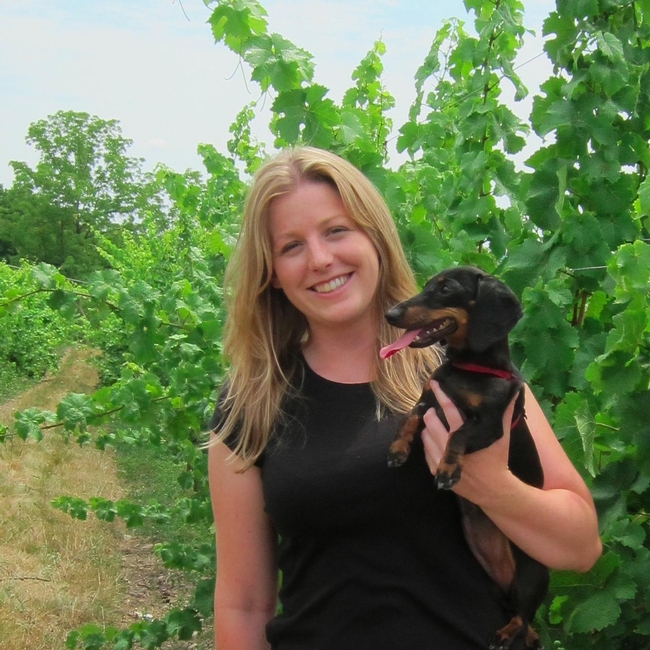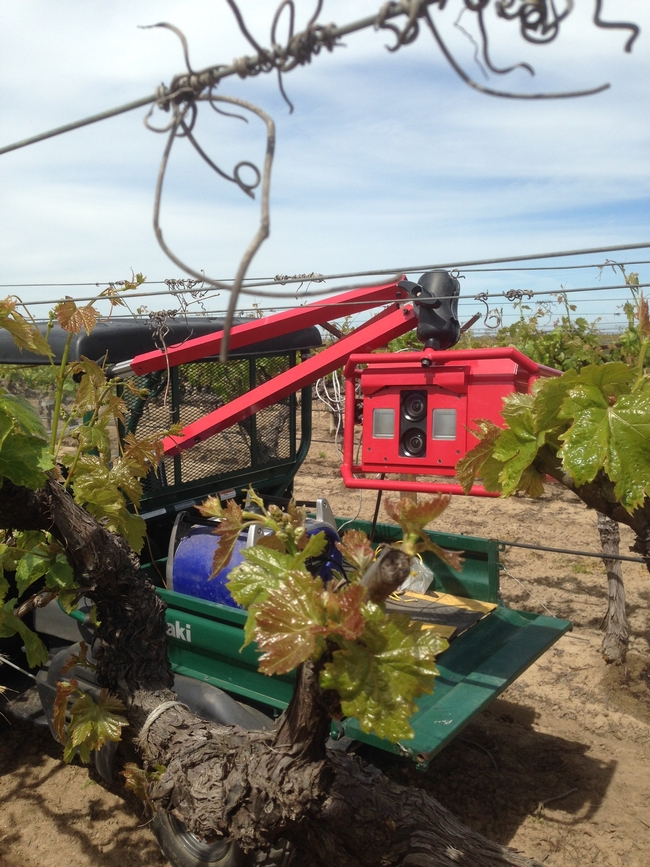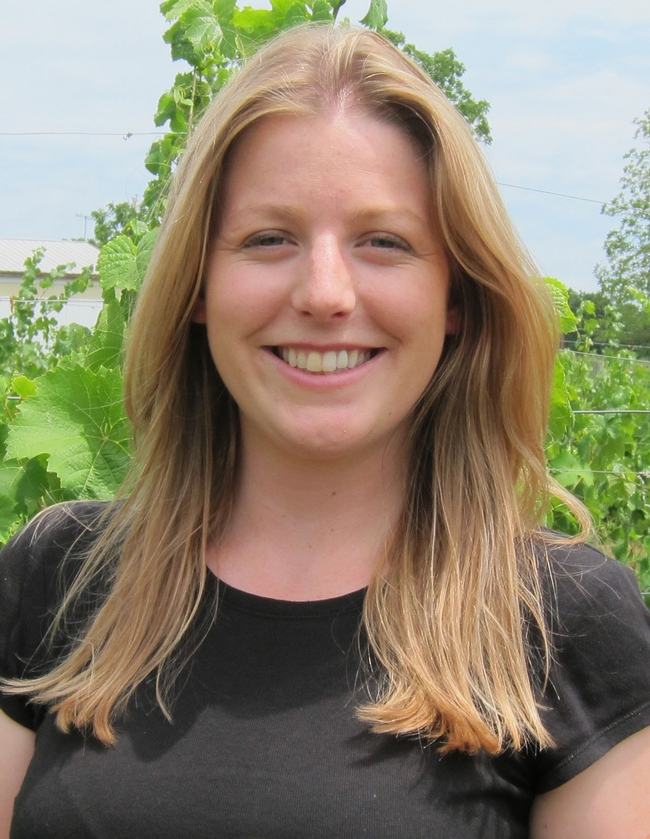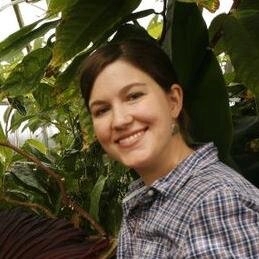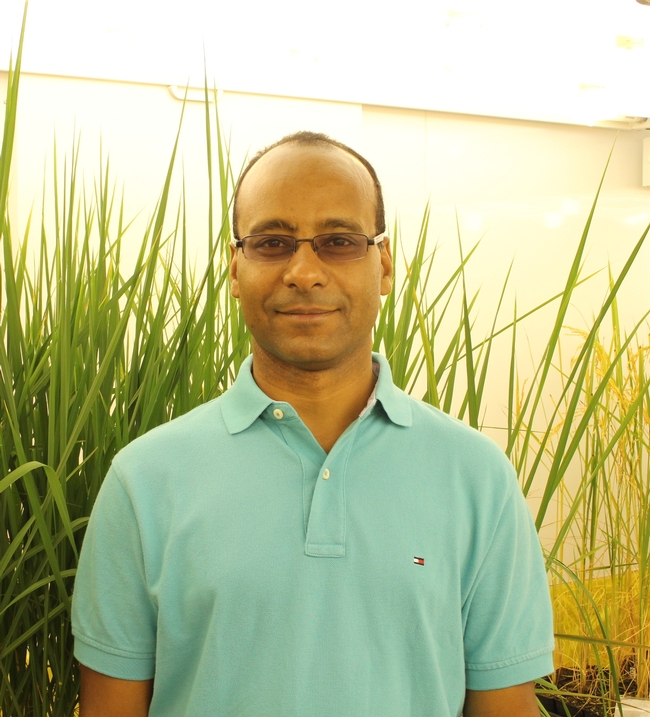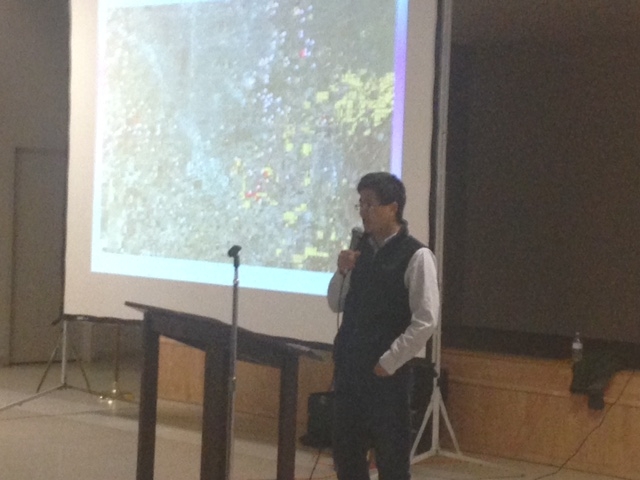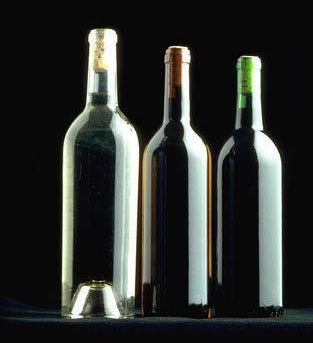Posts Tagged: viticulture
Farm advisor Lindsay Jordan creating options for vineyard sustainability
UC Cooperative Extension advisor Lindsay Jordan is growing 56 varieties of grapes at the UC Kearney Agricultural Research and Extension Center to see how varietals from other parts of the world flourish or fail, reported Sydney Maki in the Fresno Bee.
The front-page story provided an overview of Jordan's career, research plans and personality.
“My love of wine drives a lot – what can I say,” Jordan said. “I don't know about you, but I want to keep drinking wine until the day I die, so I really want to do my part to ensure the sustainability of drinking California wine.”
As part of the project, Jordan is looking for grapevines that thrive in the valley heat, produce a large crop and develop berries with color, flavor and acidity needed for fine wines.
"I won't declare any winners," Jordan said. "I'll say I have favorites, and I definitely have losers that I would not recommend.
The project was started by James Wolpert, a retired UC Cooperative Extension viticulture specialist, and continued by Matthew Fidelibus, UCCE viticulture specialist based at Kearney. Jordan took over the project a year and a half ago.
Finding the next cabernet sauvignon or chardonnay would be a home run, Fidelibus said. However, the data supplied by the project are also important in providing farmers and wineries the research and background to expand their own vineyards.
“If any of these varieties are going to be useful, it's important that the wineries are interested and comfortable with them,” Fidelibus said. “The grower can't grow varieties without the assurance that a winery is going to use them.”
Sustainable grape production and precision viticulture
Grape acreage being removed from production and the strong demand for nut tree crops have grape growers concerned about the economic sustainability of grape production in the San Joaquin Valley. The gross income of grapes per acre depends on two elements: price per ton and tons per acre. Price per ton is determined by a lot of factors, e.g. quality, region, demand, and inventory, and it is really difficult to predict the price per ton for a certain vintage. So the major target for growers is to achieve the optimum tons per acre from their vineyards.
Recently, it seems we have reached a plateau of production with current planting materials and management methods in the San Joaquin Valley vineyards. Making a vineyard less variable with more uniformly productive grapevines regardless of their location within a given vineyard is the most important question to the viticulturists.
Vineyard variability was first studied in Australia, and the yield variation within-vineyard is typically of the order of 8 to 10 fold . The fruit quality variation might follow the similar pattern as yield variation under or over a certain crop load window. Differential harvest was first applied in Australia with yield monitor installed on the mechanical harvesters to separate the low yield zone and high yield zone for high quality and low quality fruit for different wine programs. It was an improvement from the winemaking point of view. However, differential harvest still didn't solve the problem of vineyard variability for both yield and quality. Then viticulturists started to think of differential management or even differential planting may provide a solution to variation in vineyards.
Then the question becomes: is the variation pattern always consistent? Unlike annual broadacre crops, e.g. corn or soybeans, grapevines are a perennial crop and the yield variation carry-over effect is always something important for viticulturists to keep in mind. Initial research results suggested the variation pattern can be consistent in 2 years' period. However, different site location may contribute to vineyard variation as well. Soil texture, water holding capacity, and soil mineral nutrient content were believed to be the main cause of the variability. Further investigation is needed to confirm that the variation pattern is somehow consistent and manageable to make the vineyards produce uniformly.
Once it is assessed vineyard variability can be managed. Defining vineyard variability becomes the next question. Assessing vineyard variability visually may not be possible for large vineyards. Yield monitoring, on the other hand, is only suitable to define the variability at harvest and might be also financially difficult for small growers. Early detection of the vineyard variability in order to manage the vineyard differentially is an active area of research. Currently, different sensors have become available for vineyard managers to tell how much variability is in the vineyard through measurement of canopy reflectance through use of NDVI, thermal images, irrigation scheduling using sap flow sensors and availability of soil moisture through measurement of soil matric potential. UAVs and satellite imagery are also available to assess vineyard variability at an economical cost, as they may provide larger data sets with relative cheap cost. However, ground-truthing is needed to make sure how accurately these data from different sensors define the variability in the vineyard.
Recently, Cornel University, Carnegie Mellon, and UC Davis were awarded a $6 million grant from the USDA's Specialty Crop Research Initiative (SCRI) to further study the proximal sensing, crop estimation, and soil mapping to develop tools for variable rate management in table and wine grape vineyards. The goal of the project is to increase/optimize yield and quality within a vineyard by spatially tuning (a) vine balance and (b) canopy light microclimate.
The challenge for San Joaquin Valley grape growers is to make grape growing more economically sustainable for future generations. Optimizing yield per acre with less labor and energy inputs should be the goal of growers. Reducing the vineyard variability to have more uniform production might give growers more profit per acre by increasing the yield per acre without adversely affecting fruit quality. Ultimately, new breeding materials will be the long term goal to increase the yield potential and profitability for vineyards.
New ANR advisor profiled in Wines and Vines
Lindsay Jordan has joined the academic staff of UC Agriculture and Natural Resources as a UC Cooperative Extension viticulture advisor for Merced, Mariposa and Madera counties, reported Jane Firstenfeld in Wines and Vines.
Jordan has a master's degree from Cornell University and bachelor's degree from UC Davis.
"We consider her a star," said Maxwell Norton, who retires June 30 after 30 years as a Merced County UC ANR advisor and county director.
Jordon told Wines and Vines that she expects water use, conservation and irrigation issues to be topics of interest to growers in her territory, which she estimates contains about 90,000 acres of vineyards.
However, her focus, she said, will "ultimately be determined by what best serves the growers."
Publication introduces 'bright, inquisitive' new UCCE advisors
Two new UC Cooperative Extension viticulture advisors are the subject of a lengthy Q&A in Growing Produce. The juxtaposition of Allison Ferry-Abee, who serves Kings and Tulare counties, and Ashraf El kereamy, who serves Kern County, makes for interesting reading.
Ferry-Abee has deep valley roots. She is a native of Easton and her great-grandfather was a pest inspector for Sun Maid. Ferry-Abee earned a bachelor's degree at Fresno State and a doctorate degree at UC Davis.
El kereamy hails from Egypt. He visited the San Joaquin Valley on a scientific tour organized by the Egyptian ministry of agriculture and dreamed of one day working there. El kereamy graduated from Faculty of Agriculture, Ain Shams University, Cairo, Egypt, and earned a Ph.D. in Toulouse, France.
Both new viticulture advisors expressed their interest in the extension and research aspects of their jobs.
"I love both doing research and working with growers. Growers inspire me to ask questions and define issues, and research helps me to solve those questions and issues," Ferry-Abee said.
Said El kereamy: "The relation between the two activities is tight and I enjoy being in the vineyard to help the growers, design my experiments and carry the research at the same time."
A new UCCE viticulture advisor for Fresno County has also been hired. George Zhuang, whose first day was Monday, Jan. 5, was introduced to wine, table and raisin grape farmers at the annual San Joaquin Grape Symposium Jan. 7 in Easton.
More women pursuing careers in winemaking
But times have changed, Reuters reported. David Block, the head of the university's viticulture and enology department, said about 60 percent of their graduate students this year are women.
Edwards now has her own winery in Sonoma County's Russian River Valley and her own clone.
"Its formal name is UCD clone 37, but everyone around here calls it Merry's clone. And right now we're surrounded by it," she said, pointing to the acres of vineyards just outside the winery window.


